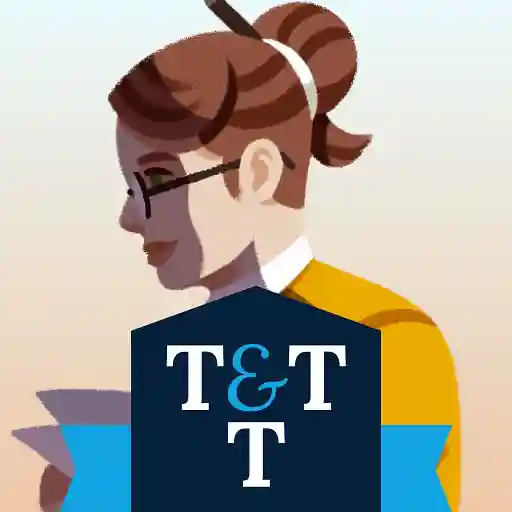This presentation from Joanna Penn is designed to guide you through the key steps of turning your nonfiction book idea into reality. Whether you want to share your expertise, build your personal brand, or tell a personal story, you’ll learn how to clarify your “why,” identify your target audience, and structure, write, and edit your manuscript. It isn’t just about writing — it highlights how aligning your goals and engaging readers can open new opportunities for your career and creativity.
This is a summary of Joanna's hour-long livestream. To hear her go into more detail, you can use the time stamps featured below.
Step 1 – Clarify Your “Why” (07:07)
Pinpoint the deeper motivation behind your nonfiction project before you write a single word. Ask yourself what true success looks like — maybe you want to share hard-earned expertise, promote a business or service, or take readers along on a personal journey of change. Once you know your core “why,” you can shape your entire manuscript around that vision. By getting specific — such as aiming to inspire readers to take up a new hobby, shift their mindset, or explore a more meaningful life path — you give every chapter a clear purpose. Each time you revisit your motivation, you keep distractions at bay and maintain momentum. The result is a cohesive book that delivers exactly what you promise.
Step 2 – Understand Your Target Audience (08:26)
Picture the individuals who stand to gain the most from your words, and define the specific problem you plan to solve for them. If you’re writing for midlife career-changers, for instance, focus on insights that resonate with their circumstances. Study comparable books in your chosen niche — especially those that target a narrow demographic — to see how they deliver value. Maybe they offer step-by-step guides, personal anecdotes, or research-backed tips. Noticing these patterns helps you refine your own approach so you’re speaking directly to the reader’s situation. The more you empathize with your audience’s concerns, the better you can craft a book that hits home and sticks in their mind.
Step 3 – Define the Book Idea (12:30)
Decide which nonfiction format best suits your story or expertise — perhaps a memoir that blends personal revelations with universal takeaways, or a classic “how-to” that offers clear instruction. If you aren’t sure, you might list out potential chapter topics, read related books, or experiment with an AI tool to generate possible titles. Keep your scope clear: a focused idea helps you avoid straying into unrelated territory. Even small clarifications — like specifying that your memoir centers on self-discovery rather than a full autobiography — give you a clear creative path. By refining your idea early, you develop a compelling concept that draws readers in and keeps them engaged.
Step 4 – Structure and Organize Your Book (14:37)
Gather what you already have — old blog posts, workshop materials, or personal notes — and decide how to fit them into a logical flow. Even if you love to “discovery write,” map out a rough table of contents, so you always know where your chapters are heading. Think about the transformation your reader undergoes — if you promise career reinvention, organize your book around stages of change or key steps on that path. You don’t need a rigid structure, just enough clarity to avoid meandering. Be prepared to shuffle your content if certain sections overlap or if you realize an important theme needs its own chapter.
Step 5 – Writing and Editing (19:27)
Carve out uninterrupted blocks in your schedule to get words on the page. You don’t need to feel “inspired” each time; set the appointment, show up, and write anything that comes to mind. In the revision phase, read your manuscript with fresh eyes. Printing it out can make it easier to see repetitive phrases or disorganized passages. After a thorough self-edit, consider using editing software to catch grammar slip-ups and refine your tone. Finally, hand your work to a professional editor for a deeper critique and proofread. By making each stage a priority, you increase the chances that your finished manuscript will be clean, clear, and consistent.
Step 6 – Consider Publishing and Marketing (28:27)
Decide if you’ll pitch to traditional publishers or take the self-publishing route. If you aim for a traditional deal, you’ll likely craft a book proposal first, often long before you’ve finalized a draft. If self-publishing appeals, prepare to manage your own cover design, formatting, and release strategy. Either way, remember that simply publishing a book doesn’t guarantee readers — you need a plan to connect with them. Build an email list, guest on podcasts, or post regularly on social media. If you’re not sure where to appear, research niche shows or use AI to uncover untapped opportunities. A targeted, consistent marketing approach helps ensure your book reaches those who’ll benefit the most.
Step 7 – Build a Business Ecosystem (33:29)
Use your book as the bedrock of a larger venture. If you’re skilled at public speaking, let the book boost your credibility for workshops or conferences. If you have a method to teach, consider offering online courses or one-on-one consulting. Diversify your format options — hardcover, audiobook, digital bundles — to meet readers’ varying needs. You can also sell directly through your own website to keep more of the profits and build relationships with readers. Think about ways to bundle products, like combining a course with a workbook, to create a valuable package. By treating your nonfiction book as a platform rather than a standalone project, you open the door to multiple income streams.
Your nonfiction journey hinges on clarity at every turn — from the moment you define your purpose to the final push of marketing and expansion. By staying laser-focused on what you offer and to whom, you create a book that resonates deeply, supports your broader goals, and provides real value for your readers.
If you’re interested in Joanna’s book, How to Write Non-Fiction, you can purchase a copy today at:
www.TheCreativePenn.com/writenonfiction2
You can also sign up for a free author blueprint, which includes tips on writing fiction and non-fiction, self-publishing, book marketing, and how you can make a living with your writing:
www.TheCreativePenn.com/blueprint
Finally, you can find a PDF of Joanna’s slides from this webinar here:
www.TheCreativePenn.com/reedsy25slides





